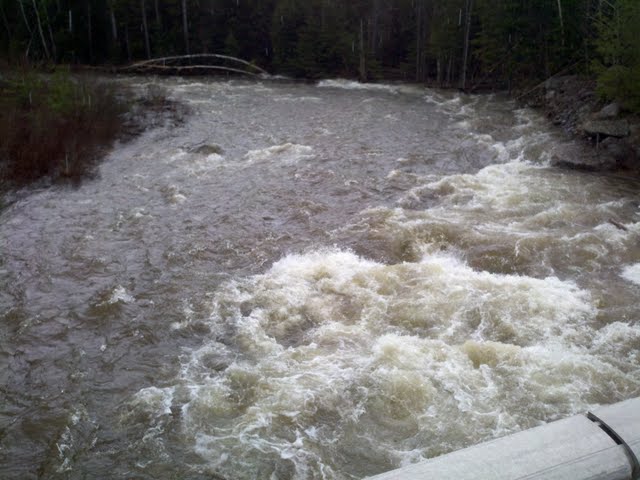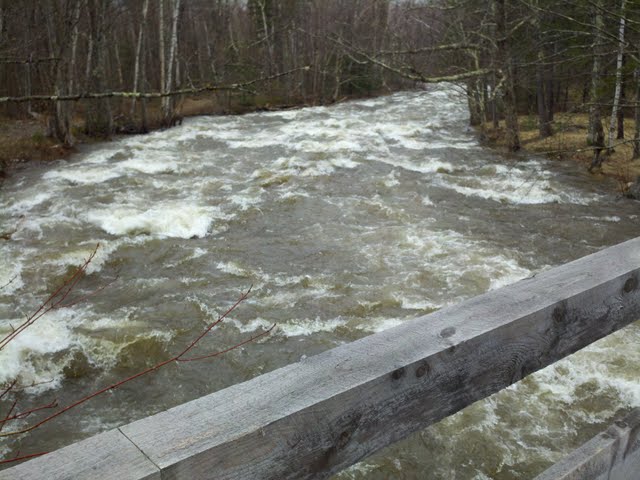You are using an out of date browser. It may not display this or other websites correctly.
You should upgrade or use an alternative browser.
You should upgrade or use an alternative browser.
Outlook for water crossings
- Thread starter una_dogger
- Start date

Help Support vftt.org:
This site may earn a commission from merchant affiliate
links, including eBay, Amazon, and others.
It's actually more interesting right now to look at the gage on the Wild River:
http://waterdata.usgs.gov/me/nwis/uv?site_no=01054200
Why? Because you can actually see the pattern of snowmelt as the river goes up during the warm days and back down during the cool nights.
1800cfs is definitely higher than summer's usual 150-200cfs on the Wild; however, it's still nowhere near a post-rain-event 5000cfs.
http://waterdata.usgs.gov/me/nwis/uv?site_no=01054200
Why? Because you can actually see the pattern of snowmelt as the river goes up during the warm days and back down during the cool nights.
1800cfs is definitely higher than summer's usual 150-200cfs on the Wild; however, it's still nowhere near a post-rain-event 5000cfs.
mirabela
Active member
7000 cfs??!!
Holy crap. At 2000 you can hear the boulders grinding on the streambed.
Holy crap. At 2000 you can hear the boulders grinding on the streambed.
High and dangerous in many places in the ADKs.
Similar in places in the Catskills. Some lakes and streams are at historically high levels.
Alan
Similar in places in the Catskills. Some lakes and streams are at historically high levels.
Alan
Hoo-eey! How about some folk up there post some photographs, if ya got 'em, of these here rivers? 7,000cfs is indeed a lot of water in the Pemi, and that 4,000cfs in the Wild is most definitely not fordable.
una_dogger
Well-known member
Good weekend to stay home and do yard work. 
Becca M
Active member
Good weekend to practice those "balance beam walk on the slippery log across the river" skills!!! Try to land upright!!! 
Here are a couple of pictures of the Little River from Friday 4/28 about 3:00 p.m. The Little River wasn't so little and it was roaring!
From the Rt. 3 bridge over the Little River

From the wood bridge over the Little River at the end of Little River Road

From the Rt. 3 bridge over the Little River

From the wood bridge over the Little River at the end of Little River Road

MadRiver
New member
DSettahr
Active member
- Joined
- Apr 23, 2005
- Messages
- 981
- Reaction score
- 142
Here's a link to pictures I took today in Saranac Lake: https://picasaweb.google.com/116537596394442741068/FloodingInSaranacLake#
And video: http://www.youtube.com/watch?v=Xg-bDGGgFoA
Video is the best quality I could manage with my camera... I recommend watching it though, the pictures don't really do it justice...
And video: http://www.youtube.com/watch?v=Xg-bDGGgFoA
Video is the best quality I could manage with my camera... I recommend watching it though, the pictures don't really do it justice...
TCD
Well-known member
- Joined
- Aug 18, 2004
- Messages
- 2,090
- Reaction score
- 166
For comparison to some of these smaller rivers, the Hudson peaked Friday night in Glens Falls at 50,000 cfs (not a typo; that's fifty thousand cfs). Was down at the bridge to watch the falls. It looked like one of those epic movies, where the world is ending, and here comes the water...surreal.
It's actually more interesting right now to look at the gage on the Wild River:
http://waterdata.usgs.gov/me/nwis/uv?site_no=01054200
Why? Because you can actually see the pattern of snowmelt as the river goes up during the warm days and back down during the cool nights.
1800cfs is definitely higher than summer's usual 150-200cfs on the Wild; however, it's still nowhere near a post-rain-event 5000cfs.
I think that the diurnal snowmelt flow pattern shows up better now with the clear skies (30 April - 2 May) than it did leading up to the big ppt events the previous week; see what you think (change default graph from 7 to 14 days). What interests me are the lag times, with the snowmelt peak discharges not arriving until about midnight. Same has been true with the East Branch and Pemi hydrographs the past few days also.
Similar threads
- Replies
- 10
- Views
- 2K
- Replies
- 15
- Views
- 3K
- Replies
- 8
- Views
- 1K
Latest posts
-
-
-
Mount Lafayette (Failed Attempt) via Skookumchuck January 19th
- Latest: ImYourHuckleberry
-
-